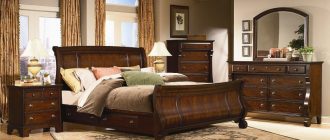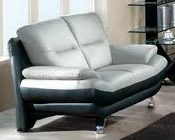Furniture executed in the Belgian city of Liege, and in Aix la Chapelle or Aachen, deserves special mention as reflecting highly skilled approaches to French Regence, Louis XV and Louis XVI designs. Liege, the capital city in the bishopric of that name, which became a part of the Circle of Westphalia, and Aachen, an ancient free city of Germany situated near the Netherlands border, developed closely related styles. These similarities existed from the time of Louis XIV’ s reign to the Empire period. Furniture designs of both cities were often modeled after those which had been popular in France several decades earlier. Carved ornament and innovations in forms were also derived from Flemish, Dutch and German projects.
Richly paneled rooms of these cities were furnished with suitably carved seat furniture, tables, commodes, various types of cabinets which sometimes incorporated clocks, tall clocks, and numerous comer pieces. Such furniture is occasionally found in walnut, though more usually in natural oak with a varnish finish, while plainer pieces were painted. The carved ornament which balanced shaped moldings, giving great charm to Louis XV pieces, was not as a rule overly elaborate, but crisply cut, employing rocaille scrolls with folds or frills. This ornament was often asymmetrically arranged, a specialty of Aachen. Coquillage motives and fieuretted treillage panels were followed by garlands, trophies, candelabra devices, baskets of flowers, torsades of pearls, etc., in the Louis XVI style. Carving was sometimes enhanced by gilding.
Astragals in door, pilaster and side panels of china cabinets might be shaped or straight, while rococo scrollwork was sometimes combined with these, or used in additional glazed border panels. During the period of Classic influence, bowknotted garlands or stems of palm leaves were introduced to permit the more economical use of glass in small plates, though full-length glass panels are found replacing the finely carved and equally characteristic wood panels.
Design influences from Liege and Aachen penetrated adjoining German sections, especially in the duchy of Berg, while some influence from Liege reached coastal areas of Flanders and Holland, being further transmitted, through shipping contacts, as distantly as Spain.





